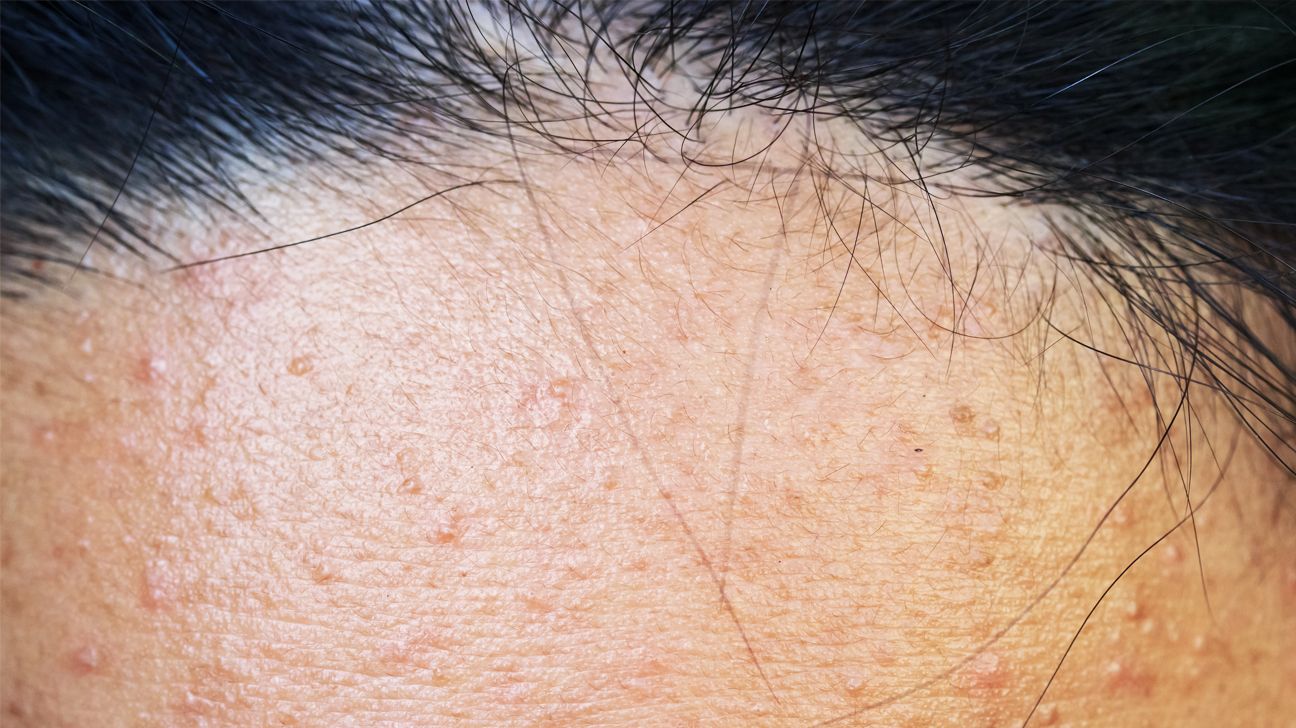Keratosis pilaris (KP) involves groups of tiny bumps on the skin. Though it’s harmless, some people may want to treat it on the face for aesthetic reasons.

KP is a mild, chronic skin condition. Though it typically appears on the upper arms, thighs, and chest area, it also sometimes appears on the face.
Since it’s harmless and doesn’t signify an underlying medical condition, it doesn’t require treatment. That said, many people want to treat the symptoms for aesthetic reasons, especially when they emerge on the face.
Here’s what to know about how the condition manifests and its treatment.
KP involves very small, raised bumps typically where there are hair follicles. These bumps tend to look like very tiny pimples or goosebumps.
KP is typically pretty close in color to one’s natural skin tone or may even be the same. On lighter skin, the bumps may be slightly white, pink, or red.
On darker skin, the bumps may be brown or black, but will typically be just a bit darker than the surrounding skin tone.
KP happens when keratin (or hair protein) and/or dead skin builds up and clogs follicles, which causes the bumps.
Though the factors that cause the buildup
KP also is more common
KS
That said, the appearance of KP may bother some people, especially on the face or neck. The bumps may also itch slightly for some people, which can be another reason to treat it.
At-home treatments
You can generally
- Good hygiene: Washing the face and neck twice daily with hypoallergenic soap will help keep follicles clear of dead skin buildup that can cause KP.
- Keeping hands off: Avoiding pinching, popping, or itching the bumps can prevent them from becoming more irritated. It can also prevent scarring.
- Moisturizing: According to the American Academy of Dermatology, treating underlying dry skin can help prevent KP from itching or becoming more severe. Emollients are moisturizers specifically designed to treat dry skin and lock in moisture.
- Exfoliating: Regular exfoliation can further clear out dead skin buildup that can otherwise clog follicles and cause KP. Physical exfoliants, as well as chemical ones like retinoids, salicylic acid, azelaic acid, or lactic acid may help. Since excess exfoliation can cause irritation, start slow and build your way up to using more. To prevent dryness, always moisturize after exfoliating.
Medical treatments
If your condition is more severe or continues to bother you, you may want to seek support from a doctor. Treatments may
- laser treatments (including pulsed dye and Nd:YAG laser therapy)
- chemical peels (specifically with 70% glycolic acid)
- prescription-strength retinoids
- anti-inflammatory medications
Keep in mind that although these may diminish the appearance of KP, there’s not yet a known cure for the condition.
KP is a very common condition that has no known side effects on health. For that reason, it doesn’t need to be treated. It also may improve on its own over time.
Many people may still want to treat KP on the face and neck for cosmetic purposes.
Cleansing with hypoallergenic soap, moisturizing with emollients, and exfoliating may help reduce the bumps’ appearance. Keeping your hands off the outbreaks can also prevent irritation and scarring.
If your condition doesn’t improve, a dermatologist can help. Laser treatments, chemical peels, and other in-office treatments may drastically reduce the appearance of the bumps or resulting scars.
